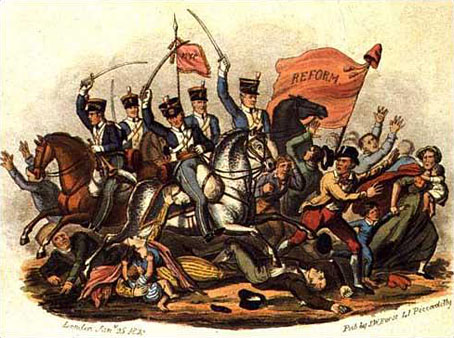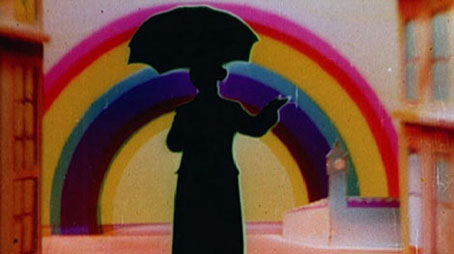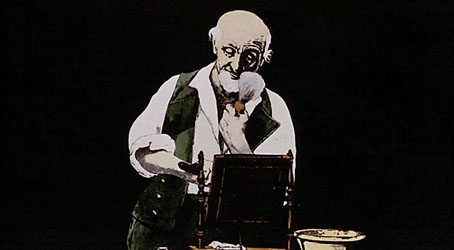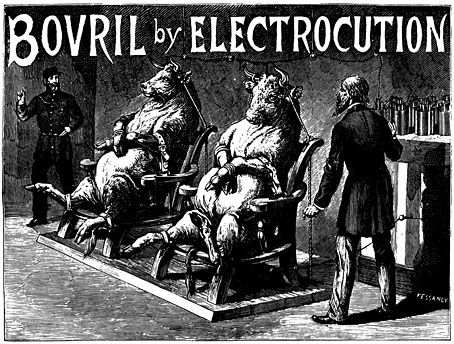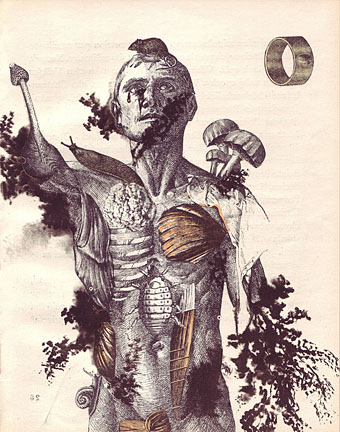I have Greg Jarvis of Flowers of Hell to thank for prompting this discovery. Greg left a comment on an earlier post about Aubrey Beardsley’s influence in the musical world in which he drew my attention to some Flowers of Hell cover art and a video inspired by Beardsley’s Morte Darthur drawings. The video reminded me of a short animated film I’d known about for years but never seen, After Beardsley by Chris James. Sure enough it too is on YouTube, to my great surprise since I swear I’ve searched in vain for this in the past.
After Beardsley was made in 1981 and my knowledge of the film is a result of its being praised by V&A curator Stephen Calloway. The picture of Aubrey in a hospital bed featured in the 1993 V&A exhibition High Art and Low Life: The Studio and the fin de siècle, and is also the final picture in Calloway’s 1998 biography of the artist. Chris James describes the film thus:
The film After Beardsley attempts to depict today’s world through Beardsley’s eyes and in his drawing style…Beardsley is ‘resurrected’ from his death bed and begins to walk through time to the present. On his journey he witnesses the evolution of the car and of air and sea travel, then climbs a phallic mountain before descending into 20th century New York City. [The] ghost of Aubrey Beardsley explores the urban jungle of New York City where, amongst other things, he sees Bob Dylan as a satyr sitting by an iconic 1959 Chevy, and Lenny Bruce being injected with heroin. He is then beckoned by Patti Smith (as Beardsley’s Messalina) into a hospital room where he finds himself hooked up to life support equipment. His hospital persona shows his ghost the horrors of the present day—overpopulation, pestilence starvation, and death. Via John Lennon, he sees the horrors of a nuclear winter. The premise of the film is that, if Beardsley had been alive today instead of the 1890s, modern medicine would have kept him alive, but that, having had a glimpse of where the world was heading, he may have chosen to die anyway. Written and drawn by Chris James, after Aubrey Beardsley. Music by Ronnie Fowler.
As Beardsley pastiche the drawing is some of the best I’ve seen, it’s easy to see why Calloway would be impressed. The film is split into three parts here, here and here, and Chris James has more animation on his YT channel. I’d be tempted to ask for a better quality copy but for now seeing the film at all is good enough.
Elsewhere on { feuilleton }
• The Aubrey Beardsley archive



